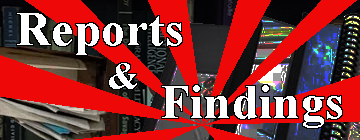



The national news comes up every day with a new report or the findings of a survey etc. They use the words 'report' and 'findings' as if they referred to some statement of fact or 'truth'. They are usually heralded by a sensational headline designed to catch our attention. But it is often the case that no one has bothered to actually read the details of the reports or 'studies' that are quoted, (the people surveyed, how they are chosen, the actual figures produced), and they often originate from lobby groups, foundations, or not-for-profits with vested interests in promoting certain agendas and causes.
Often the sensational headline comes from a misreading of a report, or the survey quoted was taken from such a restricted sample as to make the 'findings' outright fallacious.
The words, 'report' and 'findings' have been so misused in recent times that their original meanings have been corrupted — perverted to suit the objectives of sensationalism and to progress the agendas of interest groups.
The following are analyses of reports that have been featured in Australian news media in 2023.
Index
| 1. | The Australian Child Maltreatment Study (ABC News item) |
| 2. | CoreLogic Report: Women & Property (ABC News item) |
| 3. | Warning labels on alcohol — poll results (ABC News item) |
| 4. | Code switching at work (ABC News item) |
| 5. | UN Gender Bias Survey (ABC News item) |
| 5. | The tobacco tax (Government policy) |
Example 1:
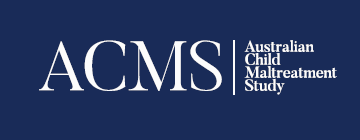

Headline: 62% of Australians have been abused, neglected, or exposed to domestic violence during childhood.
This ABC News headline (3rd April 2023) certainly caught my attention.
video transcript report-download written-article
The segment says that researchers surveyed 8,503 people who were aged over 15, and they found:
The stated findings are shocking, until you read the actual report:
The study does not reveal what the robo-call message was, nor does it say at what point in the over-the-phone interview process the vast majority of participants were eliminated, ruled ineligible, etc, nor what criteria were used to make this selection.
The most that could be reasonably taken from the study is that from a carefully selected group of 8,503 people, from a survey of 154,889 who say they are interested in child maltreatment (or indeed consider that they have been maltreated as a child), from a survey field of 404,180 mobile phone owners, the claims of maltreatment in childhood of 62% of them, came up to the official description of child abuse.
The percentages given at the start of the segment may be true of 8,503 people, carefully selected from a test sample of 404,180 people, but to 'suggest' that they may have some relevance to the entire Australian population is pure sensationalistic garbage. Further, that they can be taken seriously by the Attorney General and the National Children's Commissioner (annual salary 300K+) is a worry for all taxpayers.
The arithmatic that the study leaves out is:
So the ABC headline (to be accurate), should have read:
'1.3% of Australians have been abused, neglected, or exposed to domestic violence during childhood.'
3rd August 2023 update: In a report on channel 7 news, the arrest in Australia of a major pedophile, (a shocking case), the National Children's Commissioner, Anne Hollonds, appears on camera and quotes the figures from this report as 'fact':
Hollonds: 'The Australian Child Maltreatment Study shows that 62% of Australians have suffered one or more types of child maltreatment and nearly 30% of them suffered child sexual abuse.' (TV News segment)
21st October 2024: ABC News Mornings item. Dr Jenna McKibbin, senior research fellow at the dept. of social work at Melbourne University, (link), quotes figures from the Child Maltreatment Study as 'fact.' (TV News segment)
Example 2:


CoreLogic Report: Women & Property (ABC News item)
8th March 2023
On International Women's Day 2023, ABC ran a segment several times throughout the day concerning a report by CoreLogic, entitled 'Women & Property: One Year On'. (online) (local copy) The message being presented was that in Australia, men own more real estate than women, and because of the 'gender pay gap' 'men can save for a 20% home deposit a year earlier (on average) than women.'
The term used was 'dwelling ownership', and the figures from the report were correctly given, from the perspective of having names on the deeds of property: Property ownership: men: 29.9%; women: 26.6%. It is only when you actually read the Corelogic report that the limitations of these figures are revealed.
Only names on title deeds were considered, and this information was not compared to the electoral rolls. So, who was actually living in the properties (dwelling) and exercising the 'effective benefit of ownership' is an open question.
If you consider the facts that couples often buy a property together in the early years of the relationship whilst the female partner is not working whilst having children, then it is natural that the working partner may be the sole name on the deed to the property, (mortgage issues etc.), and the fact that after divorce, it is usual for the female partner to retain residency of the house and custody of the children. Note: there are over 56,000 divorces in Australia each year. Further, on the break-up of a relationship, division of property is the rule, regardless of whose name is on the deed to the marital home.
The report also notes that women tend to out number men in having their names on title deeds in the more affluent areas of Australia. So if you consider that the average price of a house in the suburb of Vaucluse, in Sydney's affluent eastern suburbs, is $8,375,000 and the average price of a house in a large regional centre, say Dubbo, is $540,000, one woman owning a house in Vaucluse, (where female owners predominate), would be balanced by a man owning 15.5 houses in Dubbo (where male owners predominate). But the study doesn't take this into account — it compares names on deeds without considering the values of the properties.
So, men owning (having their names on deeds) at 29.9%, compared to women (having their names on deeds) at 26.6%, ceases to have any verifyable meaning as far as wealth in property. In fact, on the figures contained in the CoreLogic report, it is much more likely that women have title to a much larger dollar amount of property value than men. And the ABC saying, repeatedly, that men 'own' more property in Australia than women, is just a blatant lie. Don't they bother to read the reports they publicise?
Example 3:
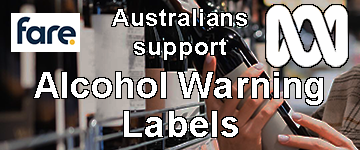

Report finds 78% of Australians support warning labels on alcohol
ABC News item: 20th October 2023.
The ABC News reported that 'Australians overwhelmingly support' a plan to introduce health warnings on wine bottles and beer cans.
They are referring to a report released by the Foundation for Alcohol Research and Education (FARE), which is a not-for-profit enterprise.
The ABC wrongly reports that 'this survey of more then 1,000 people was conducted by the Foundation for Alcohol Research and Education': the report was prepared by 'FARE', but it was based on a survey they commissioned from 'Pure Profile', an on-line survey company that pays people to complete on-line surveys. (company site) (However, reading reviews from participants you get the idea receiving actual payment can be difficult.) (link) (link)
The company by-line of 'first-party data with cutting-edge technology to power businesses into the future' indicates that their income stream comes from supplying data to businesses. An interesting insight into their methods is given from paidfromsurveys.com.
Once someone signs up to do surveys (for money) they routinely are asked to update their 'profile' with numerous details of their life, (and I presume opinions). This is where perhaps, the 'cutting-edge technology' kicks in, because participants can only participate in a survey they choose from a list of surveys that are offered to them. So there is a selection filter applied before a particular person is offered to participate in a particular survey.
The 'Report' released by 'FARE' makes no mention of a selection process. It just says that they 'commissioned Pure Profile to conduct polling of Australians.'
When you hear the word 'poll' you automatically think of people being stopped on the street and asked questions. But no! Pure Profile selects 1,000 people from their subscribers by an algorythm that isn't stated. Also the actual request given to Pure Profile is not stated. All FARE's report reveals is that they instructed Pure Profile to 'ask Australians about their support for health warnings on alcoholic products.' (Perish the thought that they indicated any preference for what the survey should conclude.)
Considering the organisations involved, the methodoligies and the unstated factors, the ABC's lead statement that 'Australians overwhelmingly support a plan to introduce health warnings on wine bottles and beer cans' starts to look like blatant misinformation.
Note: The Foundation for Alcohol Research and Education has a board of 9 members (3 men and 6 women) and a team of 25 workers (3 are men and 22 are women). The CEO and all 4 team leaders are women.
Example 4:
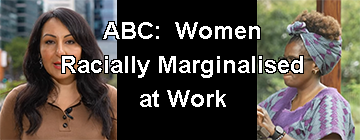

4. Why racially marginalised women hide their identity by 'code-switching' to act 'white' at work
ABC News 10th February 2023
The heading of the directory on the ABC site is 'iwd-', which indicates that it is part of the ABC programming in the lead up and aftermath of 'International Women's Day'.
It is interesting to read the article carefully. The women are not complaining about being racially abused or picked on (now). They are complaining about their own attitudes to their work situations.
If you read about 'Group Dynamics', (Wikipedia article), it is clear that what the women are doing is the same as any other person would do/has to do within the confines of a social group. The difference is that because these women are members of minority racial/cultural groups, the accommodation they must make to group dynamics is classed as discrimination. Other members of the work/social group (say white men) are merely being exposed to group dynamics.
It seems to me that a fundamental principle of 'wokeism' is to take a natural feature of social life and demonise it where it applies to select, usually minority, groups. This keeps a lot of people in highly paid jobs in the 'WOKE' and 'POLITICALLY CORRECT' industries.
The organisation who 'produced' this report, the Diversity Council Australia (DCA)1*, is a 'not-for-profit' and a 'registered charity'. I would wager though, that the people operating the organisation do not do so on a voluntary basis.2* I'm sure there is a dedicated team of high-fliers drawing executive salaries. And the continued existence of their organisation is dependent on the persistence of discrimination and exclusion. Little wonder they find it everywhere.
'Code-switching ... is common in Australian workplaces,' they say. I agree with them. In fact we all do it. It is called 'group participation': we put our differences to one side and work together.
There is a massive industry built around discrimination, and they find it everywhere. As Konstantin Kossin says: 'It's like when you buy a new car. You see that car everywhere else as you drive around.' (YouTube) They are never about to admit the war has been won. Then they'd be out of a job.
Footnote 1: I went to the Diversity Council Australia website (link), hoping to download a copy of this report. To do so, however, you must be a subscribing organisation and the minimum subscription is $1,830.00. But I suspect the findings are based on a selected group of individuals, similar to the Australian Child Maltreatment Study (link).
Footnote 2: The 2015-2016 records held by The Australian Charities and Not-for-profits Commission say Diversity Council Australia Limited had revenue of $2,032,130 and an 'emplyees expense' of $1,031,994.00 (link). The financial statements for 2021-2022, (link), show it had an income of $4,662,287 and an 'emplyees expense' of $2,702,196. The 2016 records also show it had 5 full-time employees, 5 part-time, 2 casuals and 12 volunteers. If you divide $1,031,994 by 8 say, you get an average salary of $129,000 in 2016. This includes casuals and part-timers. So what do the management staff of this not-for-profit take home 7 years later? Anybody's guess.
Example 5:
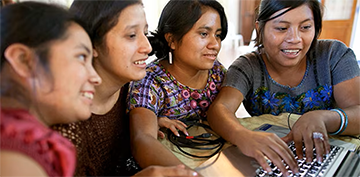
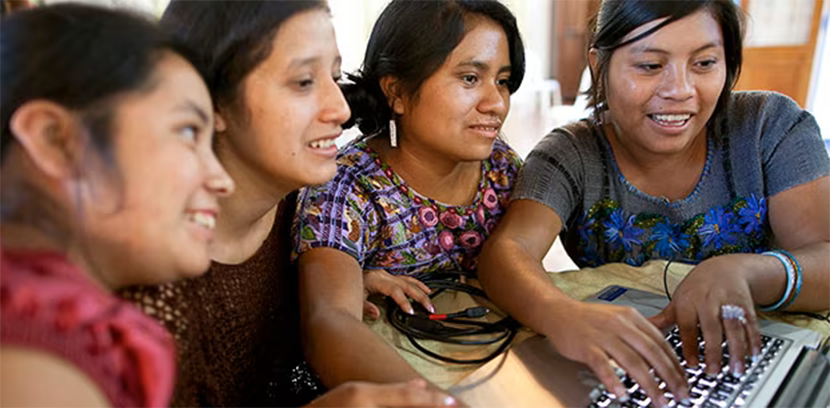
5. ABC News Report on UN Gender Bias Survey — 13th June 2023
(ABC article) (local copy) (TV item transcript)
This ABC News report is headed:
'UN Development program survey shows biases against women haven't improved over the last decade and gender inequality is stagnant.'
This is pretty shocking stuff. We all immediately think: 'Shame on Australia. Shame on Australian males.'
However, as the interview with a UNSW professor continues, we learn that the survey was conducted over 120 countries, and that in the list of the least gender biased countries, Australia is up there with the leaders, New Zealand and Sweden.
Throughout the interview, the distinction between what is happening in Australia and what is the average over 120 countries surveyed, is not defined at all. You have to download the report and really search to find any significant Australian specific data. (report download)
The TV report only vaguely mentions that the biased views are not just the views of men but women as well. Though no proportional figures are given.
The report comes with various supporting documents (link page), and the list of countries ranked in order is in a Microsoft 'Excel' document that I have not been able to open. (copy)
But they tell us Australia is right up there with the leaders. Why doesn't the headline read:
'Australia is one of least gender-biased nations in the world.'
I think it is obvious that that the ABC saw this report as a chance to spread male hate content, even though it had to totally misrepresent the data contained in it.
The report is full of masses of densely packed pages of numbers, and it is difficult to extract anything of relevance to Australia. However, one graph (shown following), shows that of the 120 countries surveyed over the past 10 years, Australia ranked 6th in the percentage increase of people with 'no bias in gender social norms' (9.5% increase). And I believe we were already coming from a fairly advanced position.
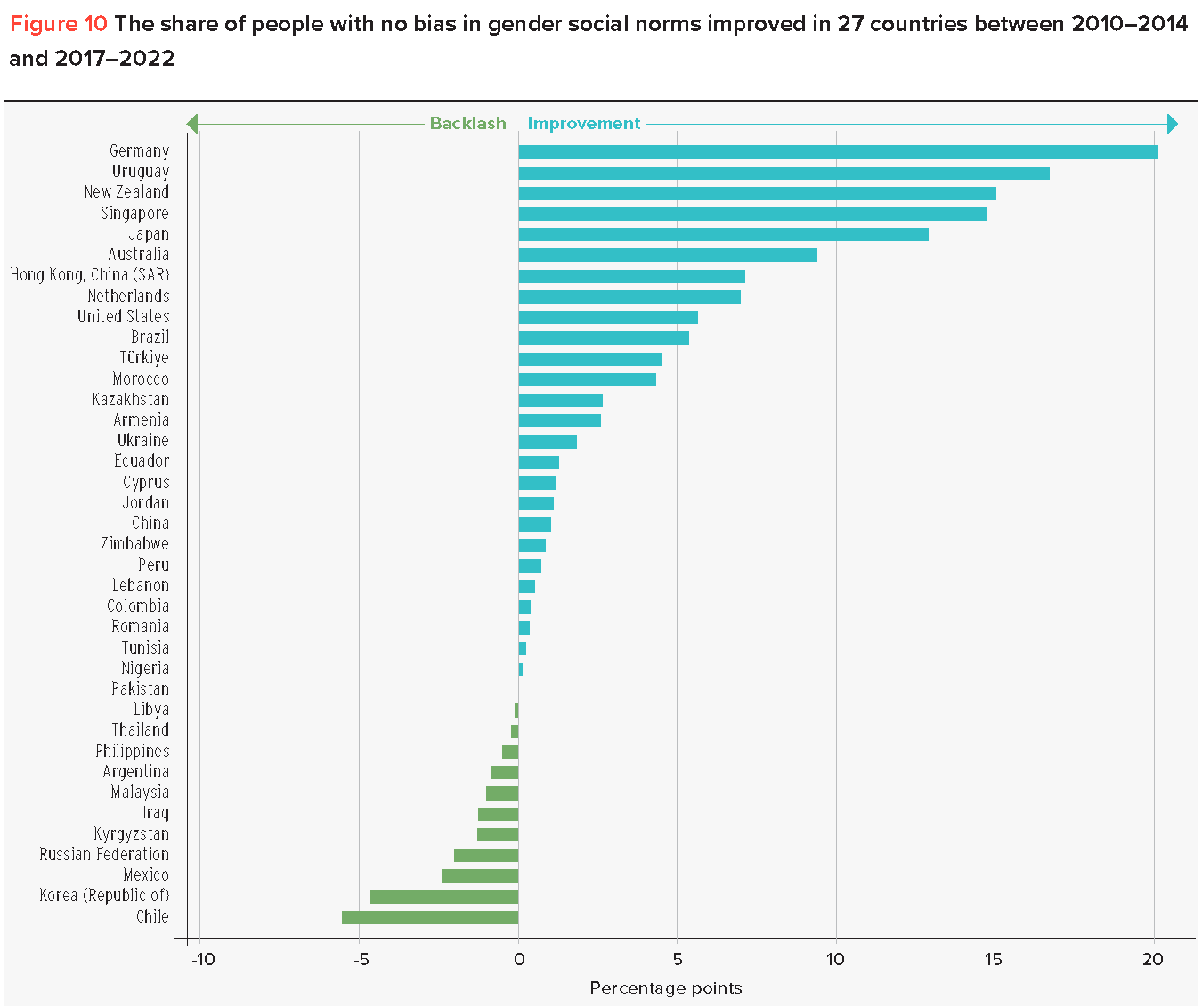
Example 6:


6. The policy of taxing tobacco products to astronomical levels.
There are a lot of so called ‘facts’ buzzing around in the popular dialogue that have their basis in documents. These documents are often physically and stylistically difficult to access and fathom, so that many popular notions are accepted without substantiation.
One such 'fact' is the notion that the use of tobacco products inflicts a major financial burden on society in health and productivity costs. This seems to be a 'simple truth', but examination of the source documents reveals that it is neither simple nor true.
When I first wrote this article (2015), the main documents (for Australia) were:
These documents are complex and heavy with statistical jargon—not accessible to the average reader.
Some of their basic parameters are:
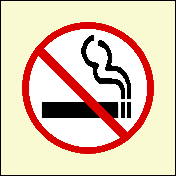

This is not a clear-cut issue. If you look at the figures and the factors included in the research documents, taxes on tobacco products present a huge income stream for federal and state governments. The grim picture of the costs of smoking tobacco, painted by government funded researchers, seems to create a ‘duty of care’ obligation on government to tax tobacco products heavily!
Jump forward 5 years to 2020 and The Australian Institute for Health and Welfare, states on its website*3*:
"The total net cost of smoking in Australia in 2015–16 has been estimated at $136.9 billion, comprising $19.2 billion in tangible costs and $117.7 billion in intangible costs. The largest of these tangible costs was spending on tobacco by dependent smokers ($5.5 billion), followed by workplace costs ($5.0 billion) and the reduction in economic output due to premature mortality ($3.4 billion). Intangible costs were estimated using the value of life lost and pain and suffering caused by smoking-attributable ill health ($25.6 billion), and premature mortality ($92.1 billion) (Whetton et al. 2019)"*4*.
These figures come from the study, Wheton et. al of Curtin University, financed by the federal government. In it they accept all the findings of Collins and Lapsley, 2008, and add:
There seems to be no limit to the exuberance with which government funded studies will dish out exaggerated figures that seem to endorse the continual increase in taxation on tobacco products. And under the radiance of this saintly glow, our governments, federal and state are reaping a rich harvest in tax income.
An interesting perspective is provided by a 1997 study published in the New England Journal of Medicine*8*, which does factor in savings through the early death of smokers. It concludes:
"If people stopped smoking, there would be a savings in health care costs, but only in the short term. Eventually, smoking cessation would lead to increased health care costs."
This study doesn't seem to have been considered by the Australian government in formulating its tobacco tax policy.
The complexity of these documents/studies are such, that no average person can access the data they present, let alone make the observations I have made here.
* * *
Note 1: An initiative of the Cancer Council of Victoria and the Heart Foundation has a more approachable and less statistically challenged presentation but it is still immensely complex.*5*
Note 2: The National Drug research Institute at Curtin University seems to be the current standard bearer and they acknowledge they are federal government funded.*4*
* * * * *
1. Begg S, Vos T, Barker B, Stevenson C, Stanley L and Lopez A. 2007, The burden of disease and injury in Australia 2003, PHE 82. Canberra: AIHW
2. Collins D and Lapsley H. 2008, The costs of tobacco, alcohol and illicit drug abuse to Australian society in 2004/5, P3-2625. Canberra: Department of Health and Ageing.
3. AIHW, Australian Institute of Health and Welfare, discussion of tobacco and impacts on Australian physical health and economy.
4. Whetton S, Tait R, Scollo M, Banks E, Chapman J, Dey T et al. 2019. Identifying the social costs of tobacco use to Australia in 2015/16. Perth: National Drug Research Institute, Curtin University.
5. Tobacco in Australia, an initiative of the Cancer Council of Victoria and the Heart Foundation, has a more approachable and less statistically challenged presentation but is still immensely complex.
7. Home Care Packages (HCP) are an Australian government program that enables older Australians to access affordable care services in their own home rather than being obliged to enter a residential care facility.
8. The New England Journal of Medicine The Healthcare Costs of Smoking